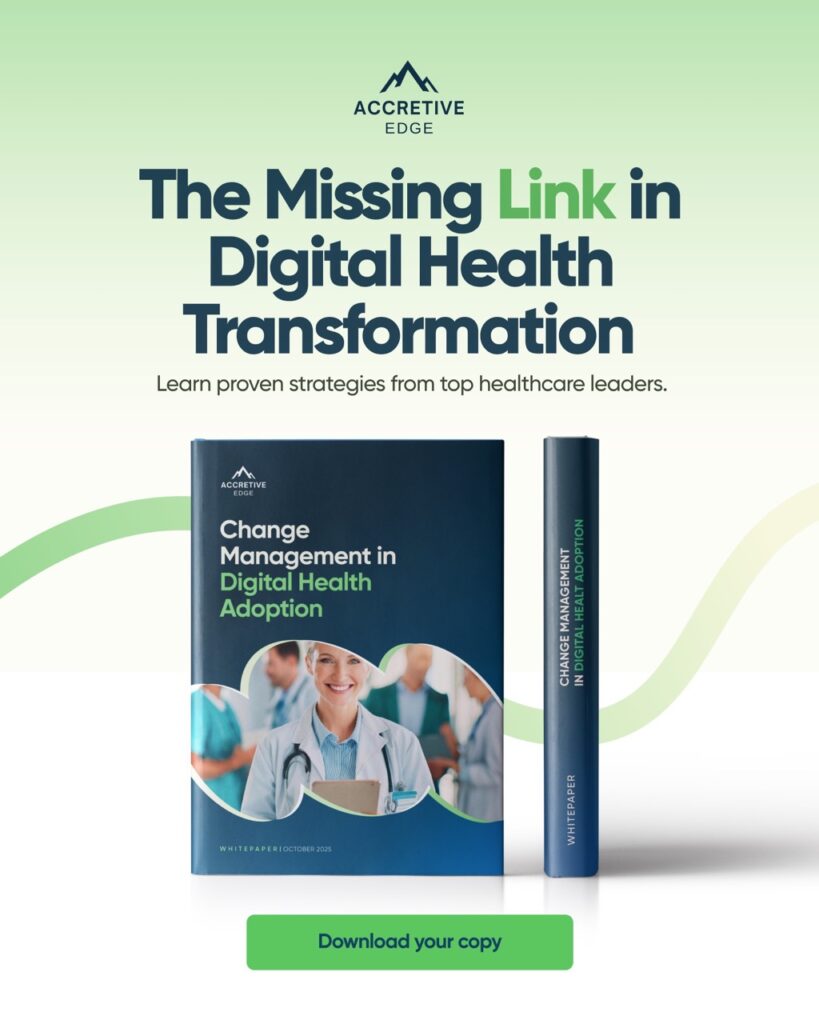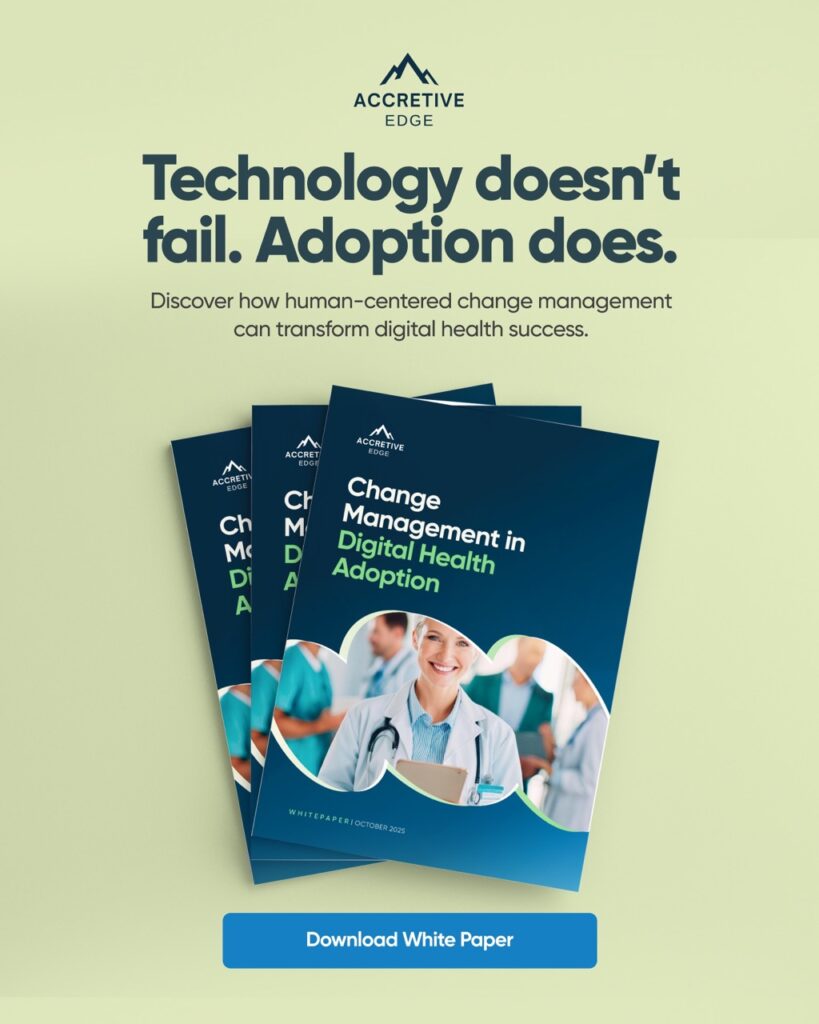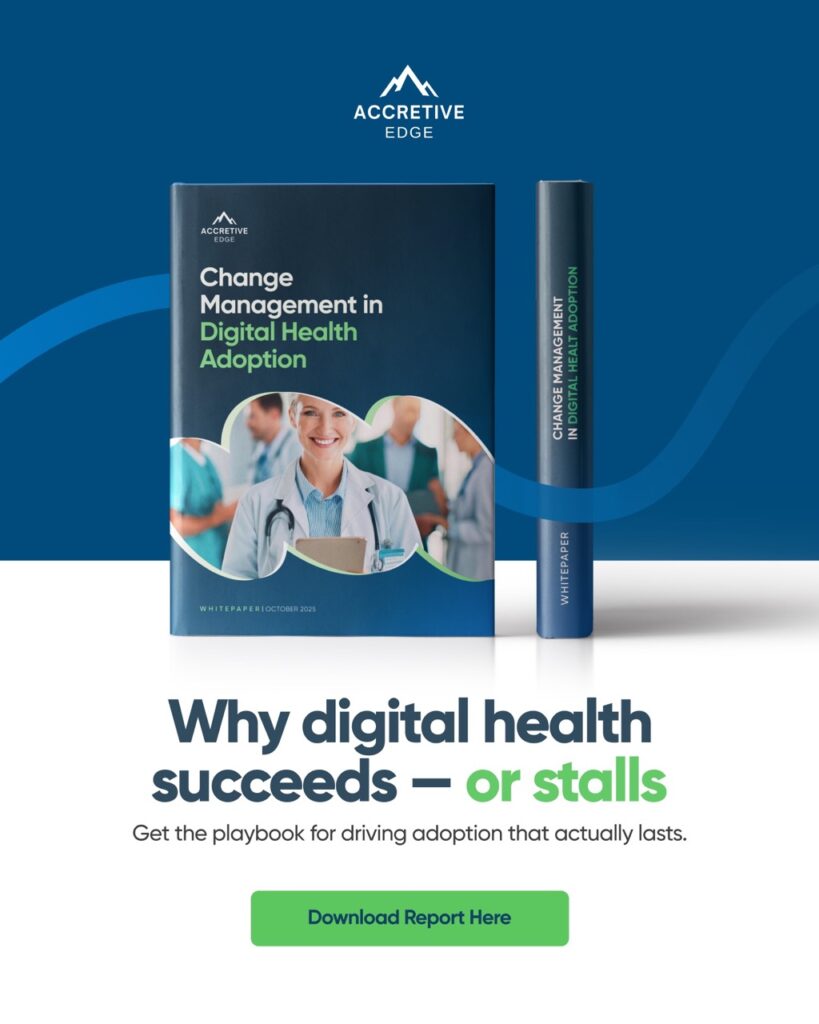WHITE PAPER
Change Management in Digital Health Adoption
This report is for healthcare technology leaders, vendors, and provider teams who’ve learned that the hardest part of digital transformation isn’t the software — it’s the people. Based on interviews with healthcare executives and clinicians, we break down why adoption fails, how to fix it, and what separates successful rollouts from costly false starts.
Download the report to learn:
- Why more than half of digital health rollouts fail to meet their goals
- The five pillars of human-centered change management driving successful adoption
- How leaders like Sharp HealthCare and Reimagine Care align people before go-live
- Practical ways vendors and providers can build structure, communication, and trust


Most healthcare organizations still deploy technology with a “tools-first” mindset
Over 50% of digital health initiatives fail to achieve expected outcomes
Most adoption failures trace back to unclear roles, weak communication, or lack of governance
Teams that embed change management from day one see faster ROI and stronger clinical engagement
Vendors that co-own adoption with clients sustain success beyond go-live
This paper helps you structure change around behavior, not just implementation.
What's inside:
Based on interviews with executives, CMIOs, and change experts, this paper breaks down the five pillars of adoption — from early alignment to sustained value — with real-world lessons from organizations that made change stick.
Andy Strunk, Principal @ Accretive Edge

Key questions we answer:
- Why does technology adoption lag even when tools are clinically sound?
- How should vendors and providers share ownership of change management?
- What early decisions determine whether adoption succeeds or stalls?
- How can organizations measure, sustain, and communicate the value of change?
This is for you if you’ve ever asked:
How do we sell to IDNs vs. ACOs — what changes?
What do we say to a CMIO or a CQO that’s different from a CFO?
When should we go bottom-up vs. top-down in our outreach?
Why do buyers keep saying “come back when you have more traction”?
Is it worth doing a pilot — and how do we structure it right?


